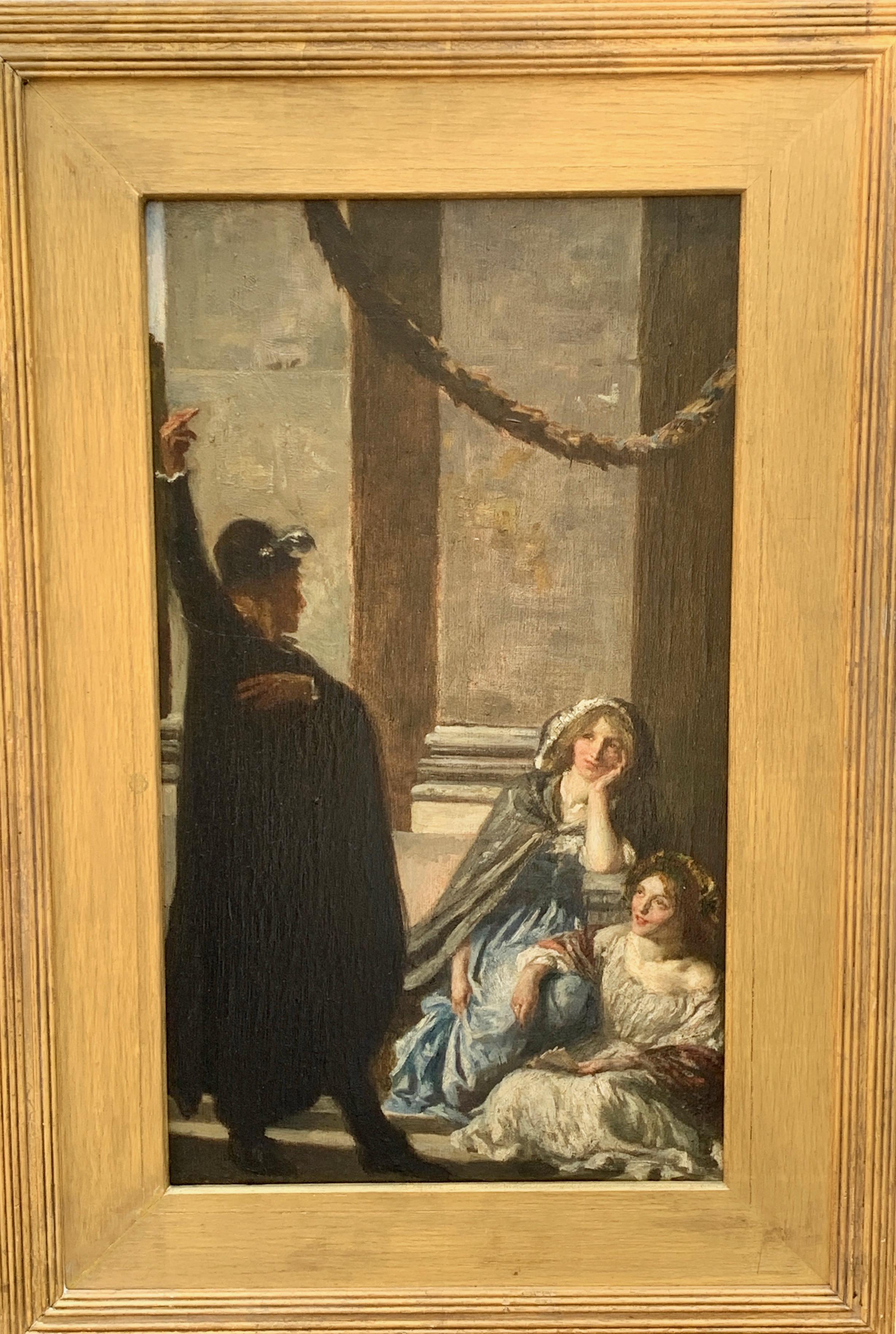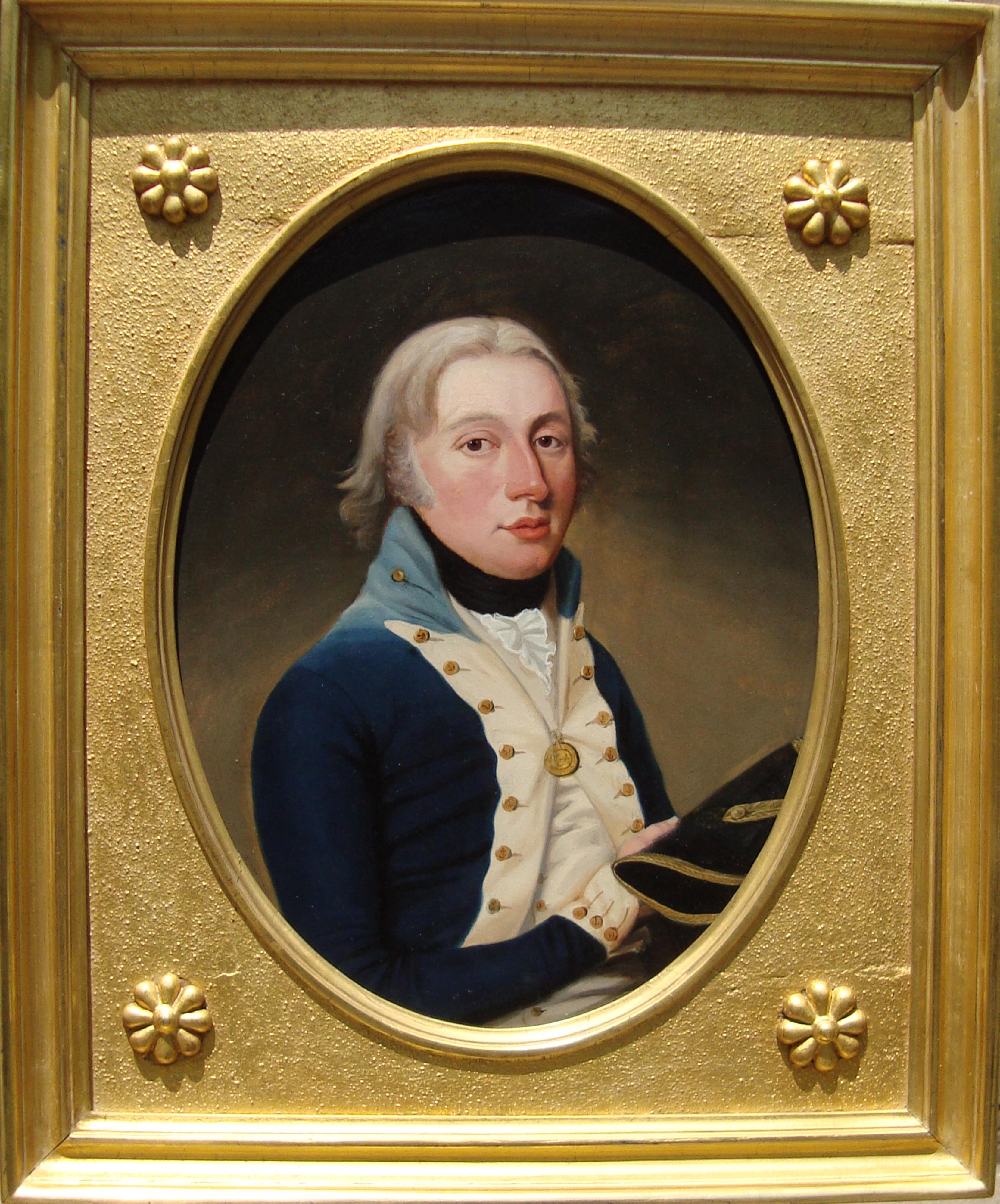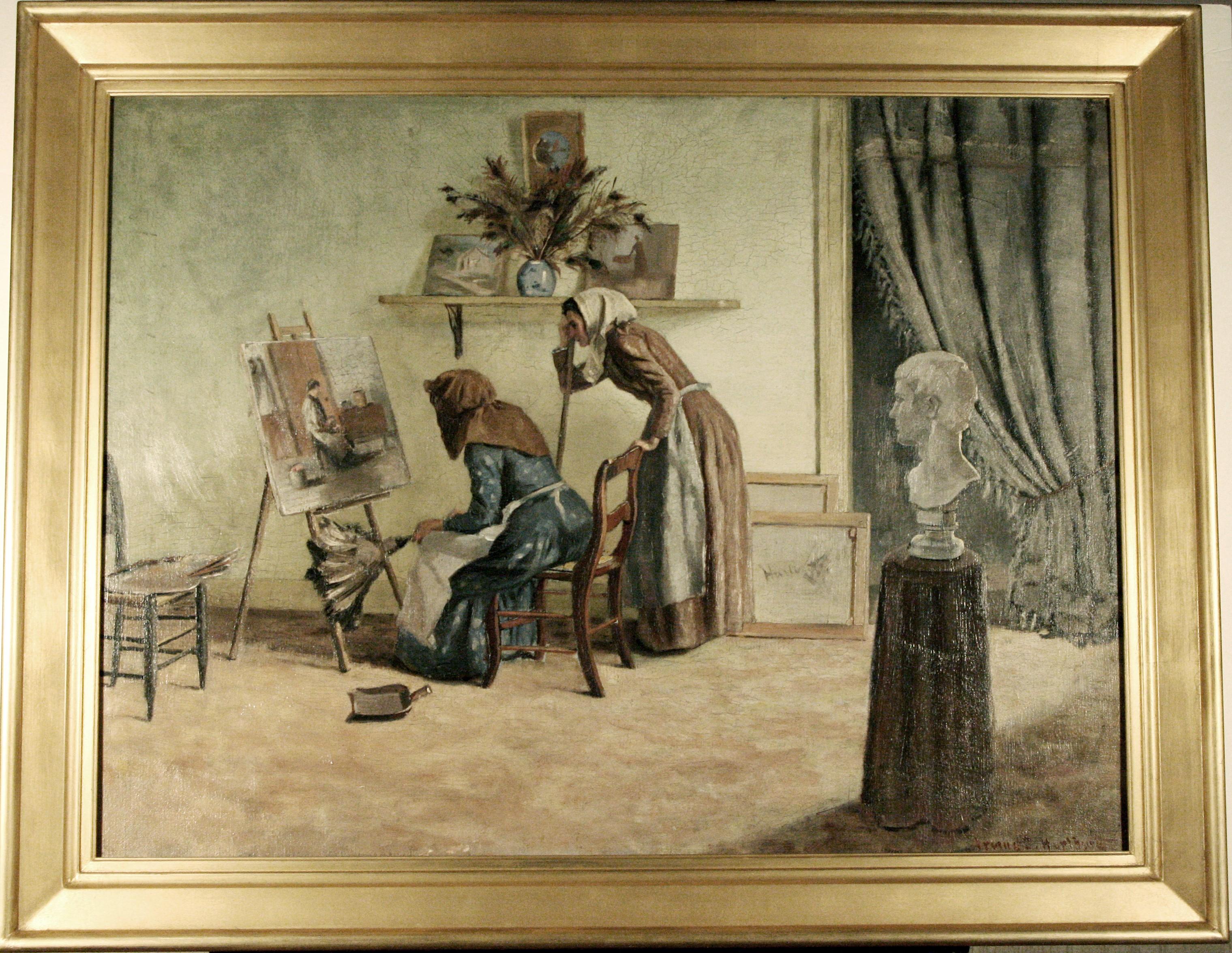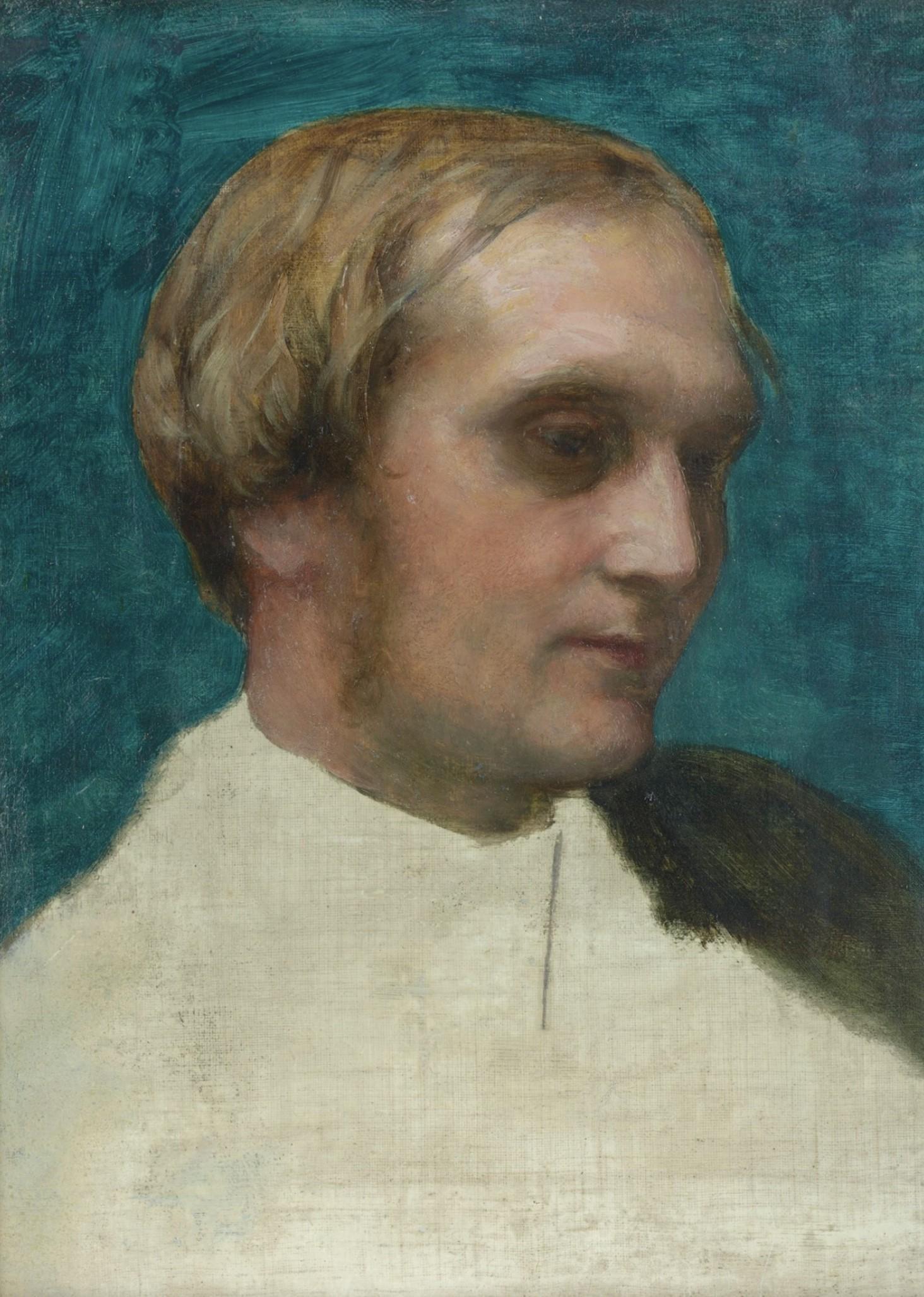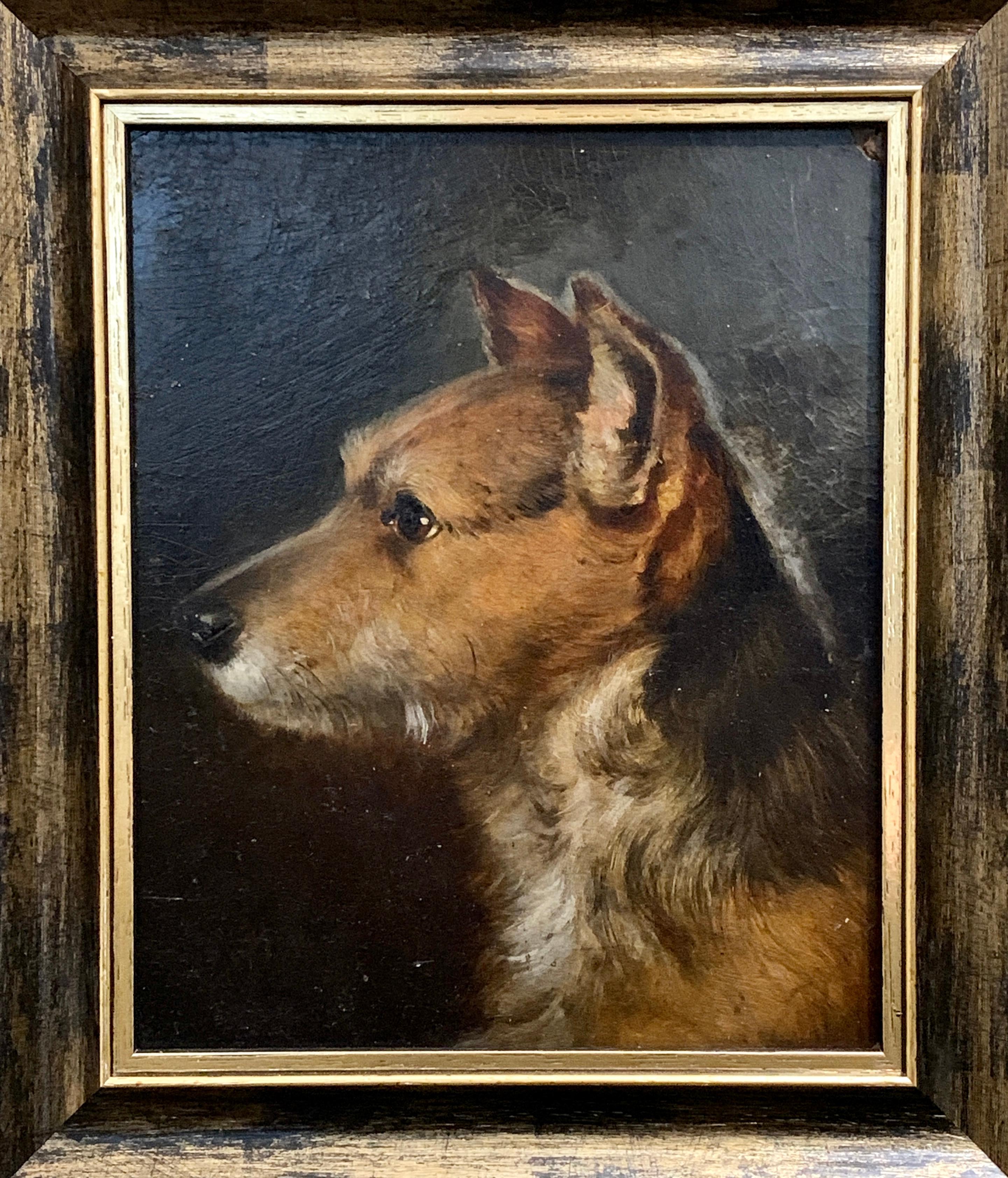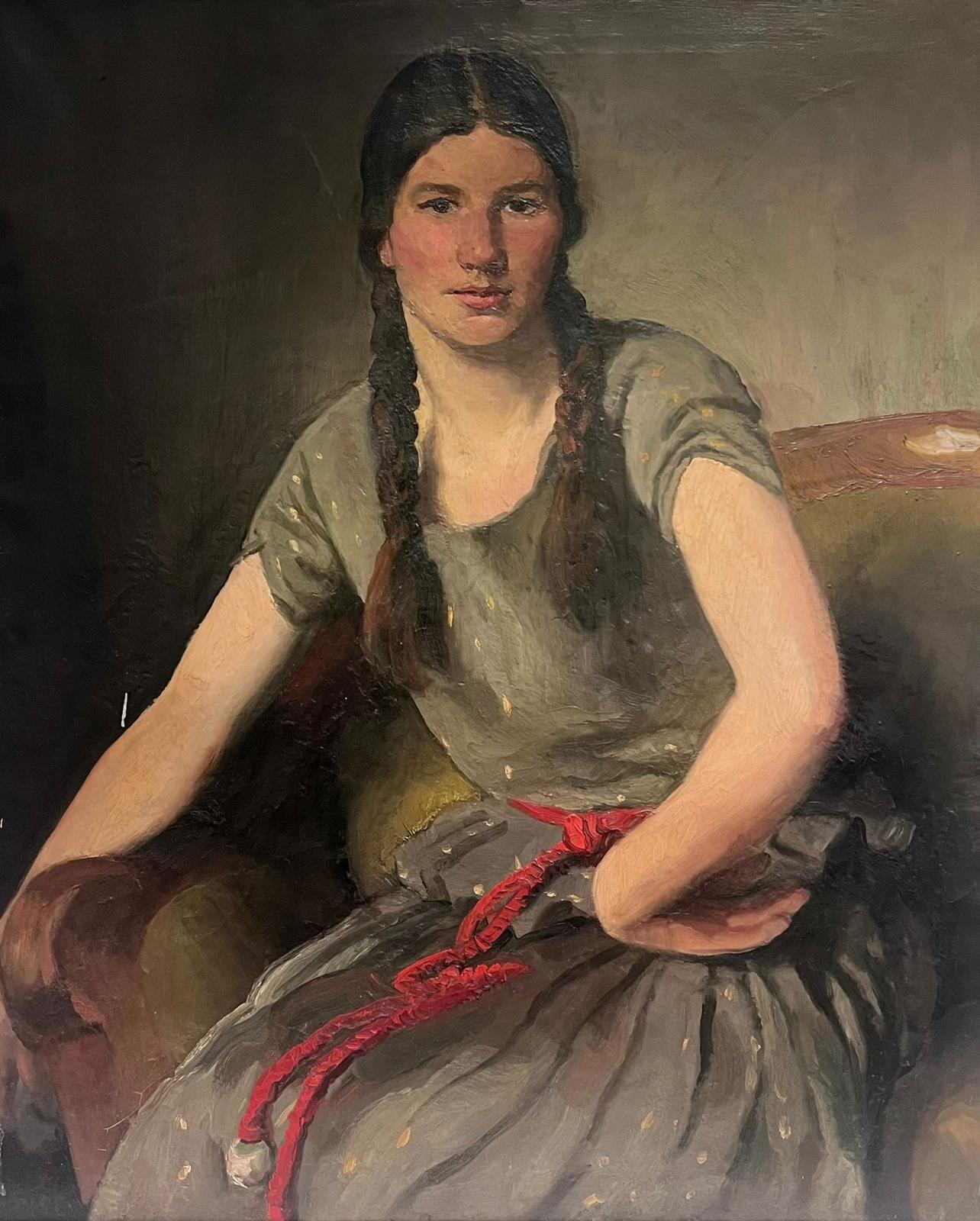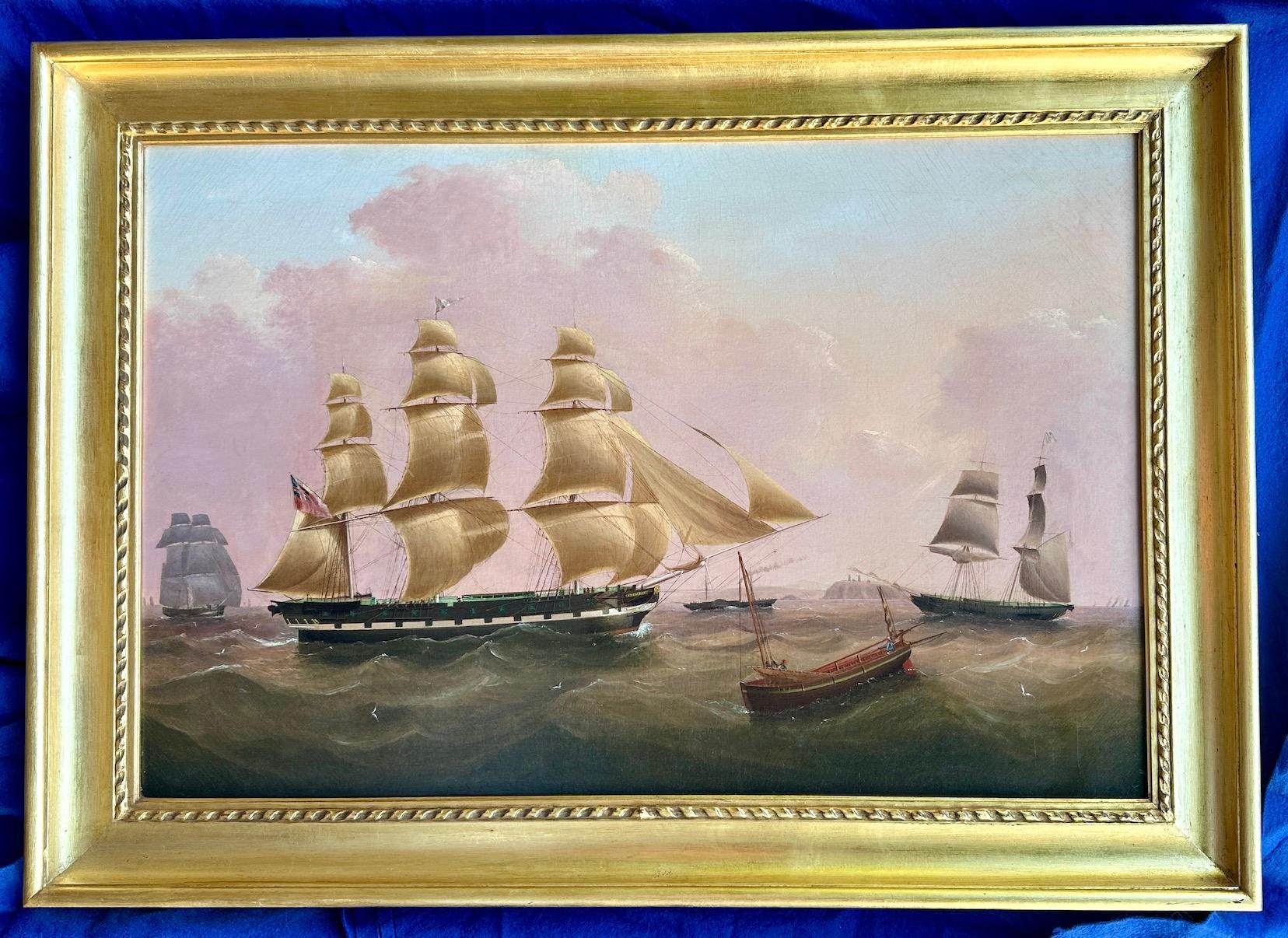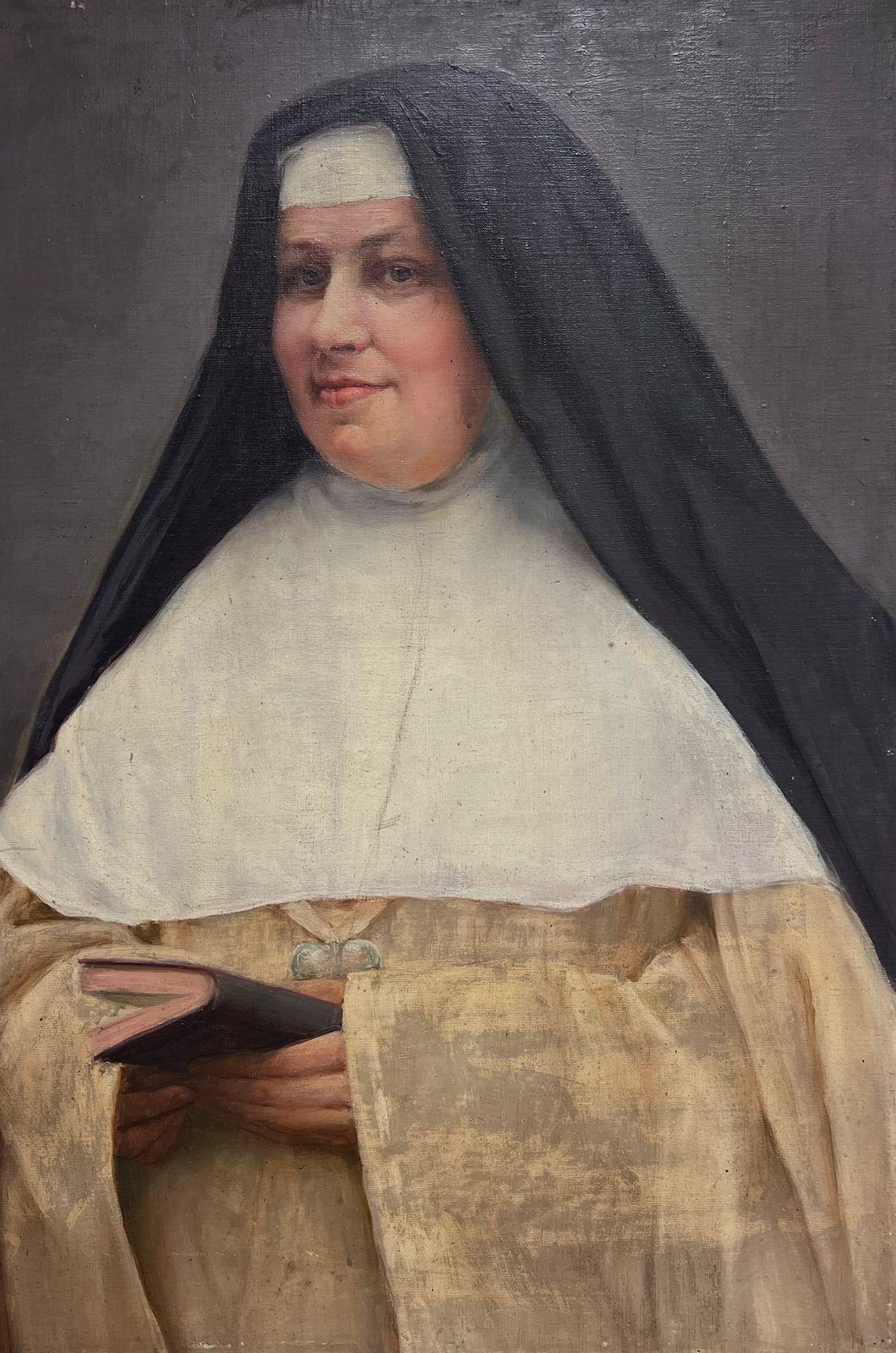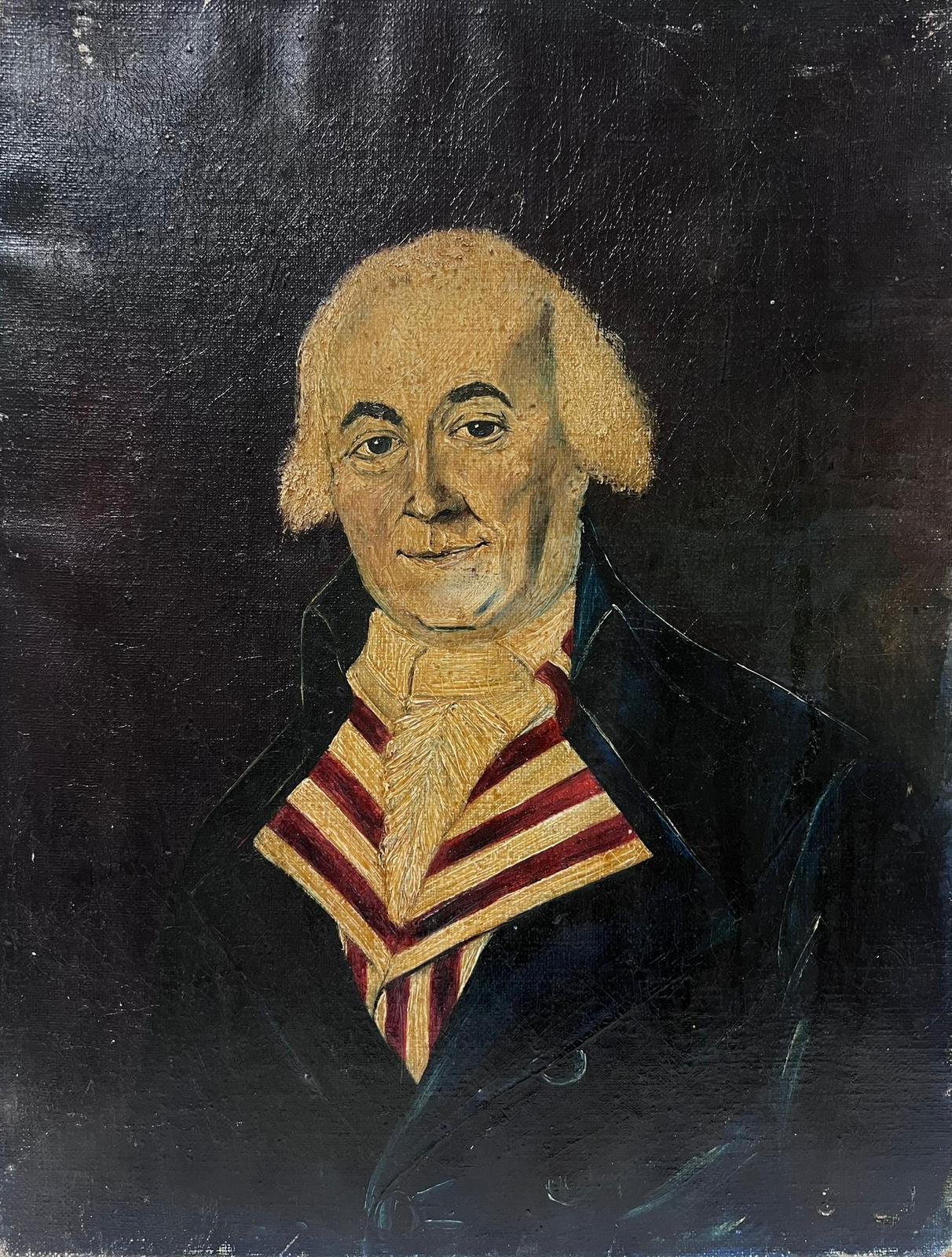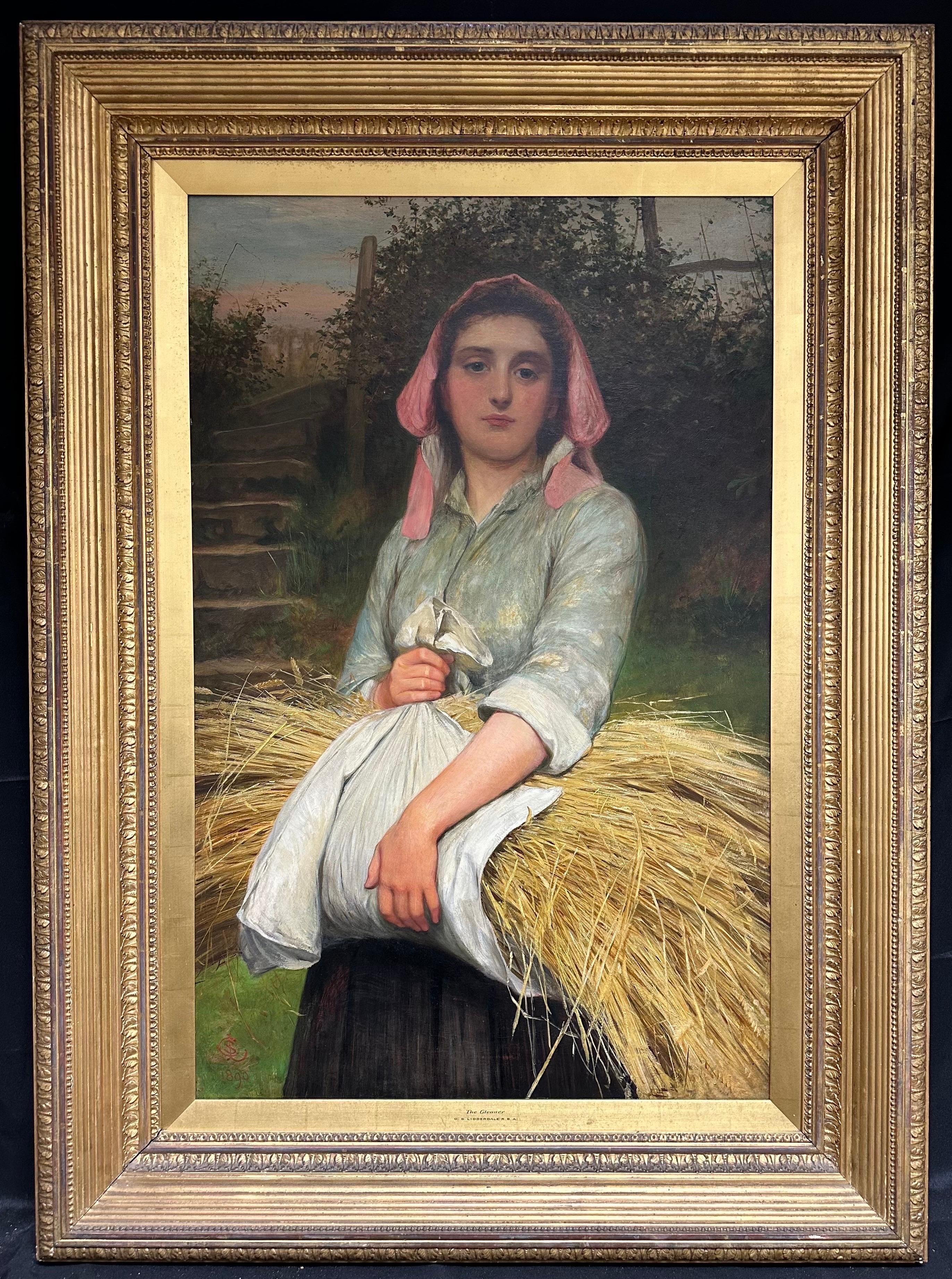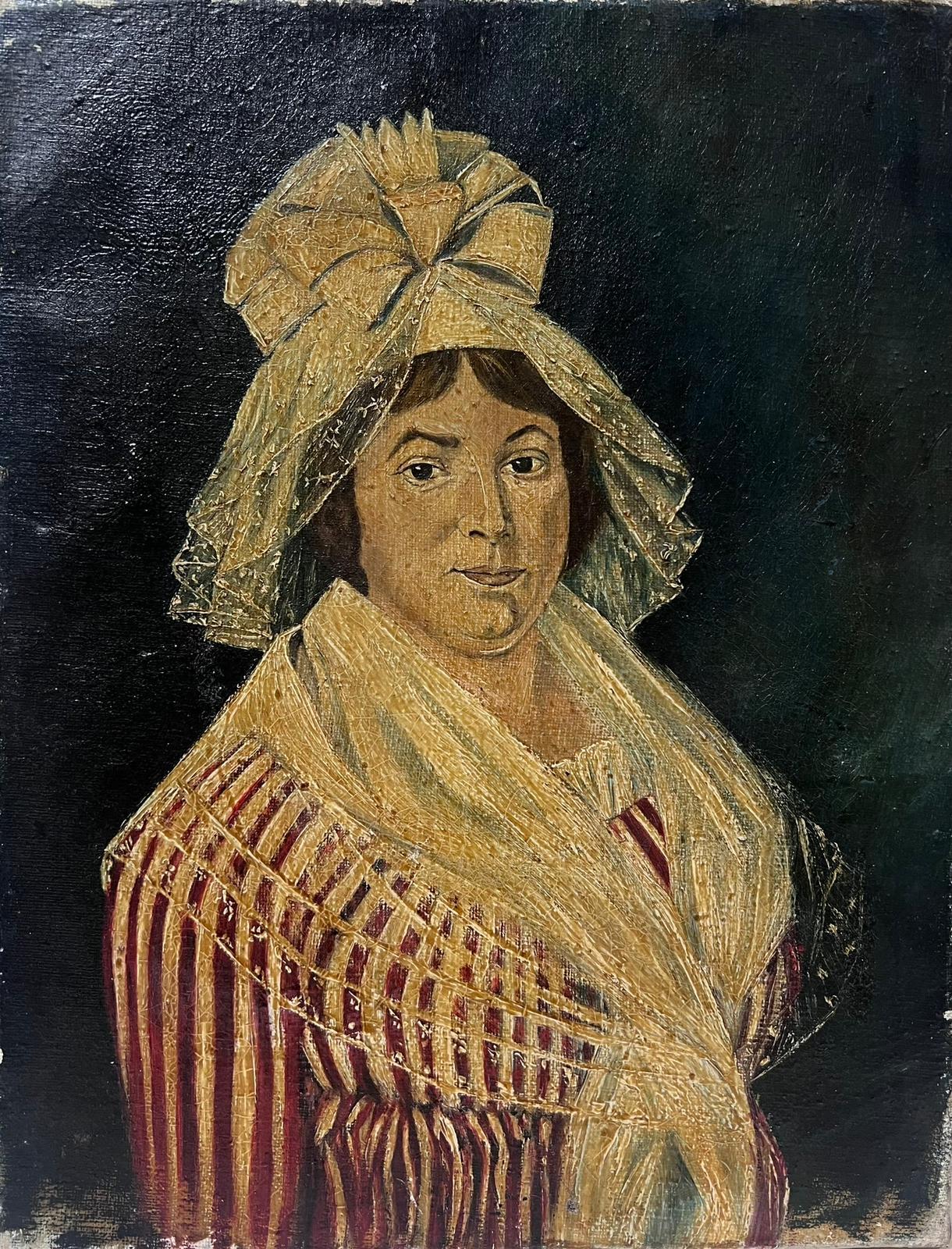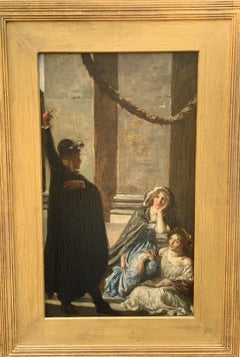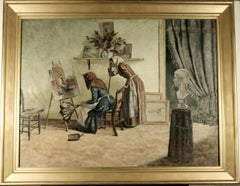
The Letter - British Victorian genre art female portrait oil painting garden
View Similar Items
Want more images or videos?
Request additional images or videos from the seller
1 of 16
Laslett John PottThe Letter - British Victorian genre art female portrait oil painting gardenCirca 1875
Circa 1875
About the Item
- Creator:Laslett John Pott (1837 - 1898, British)
- Creation Year:Circa 1875
- Dimensions:Height: 24 in (60.96 cm)Width: 16 in (40.64 cm)Depth: 2 in (5.08 cm)
- Medium:
- Movement & Style:
- Period:
- Condition:
- Gallery Location:London, GB
- Reference Number:1stDibs: LU85317552392
About the Seller
5.0
Platinum Seller
These expertly vetted sellers are 1stDibs' most experienced sellers and are rated highest by our customers.
1stDibs seller since 2018
402 sales on 1stDibs
More From This SellerView All
- Harvest Time - British Victorian exhibited art figurative landscape oil paintingLocated in London, GBThis superb large exhibited British Victorian oil painting is by noted artist Thomas Falcon Marshall. Painted in 1849 it was exhibited at the Royal Academy London that year. This lar...Category
19th Century Victorian Portrait Paintings
MaterialsOil
- Out of Mischief - British Victorian 1891 art interior portrait oil paintingLocated in London, GBThis absolutely charming exhibited British Victorian oil painting is by female artist Maria Louisa Angus. Painted in 1891, it was exhibited at the Royal Academy that same year. The composition is an interior scene with two young girls on a sofa, looking at a picture book and keeping 'out of mischief' as it is entitled. The room holds an exotic mix of oriental objects and a gorgeous umbrella plant in a gleaming terracotta pot. The girls themselves are sat on a beautifully detailed fur throw, looking at a book, with a marine painting on the wall behind them. The brushwork and colouring are superb and the pink of the older girl's dress is picked up throughout the room. A really lovely painting by a very talented Victorian female artist. Signed and dated M.L. Angus 1891 lower left. Provenance. Exhibited at the London, Royal Academy, 1891, no. 841 entitled Out of Mischief. Anonymous, sale, Doyle, New York, May 20, 1998, lot 161, illustrated. Private collection, Newport, Rhode Island. Condition. Oil on canvas, 27 inches by 20 inches unframed and in good condition. Frame. Housed in a gilt frame, 34 inches by 27 inches framed and in good condition. Maria Louisa Angus (1863 - 1934) was born in Southwark on 29th July 1863, the daughter of a printer. She studied at the Lambeth School of Art in 1886 and established a studio at 1a Cowley Street in Westminster, later she worked out of Powers Studio in Ruskin House, Rochester Row. She specialised in genre subjects and some landscapes. She exhibited 10 pictures at the Royal Academy between 1888 and 1893 as well as many London Galleries and Societies. In 1913 she exhibited in the Anglo German Exhibition...Category
19th Century Victorian Portrait Paintings
MaterialsOil
- Portrait of Girl with Puppy - British Victorian portrait oil painting dog artLocated in London, GBThis Beautiful Victorian oil painting is attributed to Scottish master Sir George Reid. Painted circa 1870, the detail in the young girl's facial features and hair are just stunning,...Category
19th Century Victorian Animal Paintings
MaterialsOil
- Debutante - British Victorian oil painting portrait Elsie Elizabeth EbsworthBy Annie Louisa SwynnertonLocated in London, GBA late 19th century British Society portrait oil painting of a beautiful young debutante by Victorian artist Annie Louisa Swynnerton which is signed and dated 1893. It has been sugge...Category
Late 19th Century Victorian Portrait Paintings
MaterialsOil
- Portrait of a Lady with Harvest - British Victorian art Exh 1842 oil paintingLocated in London, GBHenry Room, noted Birmingham artist, painted this lovely Victorian portrait oil painting. It was painted in 1842 and exhibited at the Society of British Artists the same year, entitled Forsaken Innocence. It is a charming half length portrait of a young lady in a hat, dark ringlets gleaming and ruby red lips slightly smiling. She is holding a sheaf of wheat with trees beyond. The detail and brushwork are lovely. A super pastoral oil painting and an accomplished example of Henry Room's work with excellent provenance. . Signed lower left. Indistinctly inscribed to label verso. Provenance. Exhibited at the Society of British Artists 1842 no. 63 entitled Forsaken Innocence. Mentioned in “German Compliments to British Art,” The Art-Union (Dec. 1842), 279-281. Comments by Dr. Henry Merz on the exhibition of the Society of British Artists (Suffolk Street, Pall-Mall East); p.280: “In this exhibition we find also the peculiar sentimentalism of the English school, in No. 129, ‘Sterne’s Poor Maria,’ by F. Stacpoole; No. 63, ‘Forsaken Innocence’ (a coquettish young lady with a sheaf of gleanings in her apron), by H. Room” Berwick House, Shropshire. James Watson was born in Edgbaston, Birmingham in 1818, He bought Berwick House In August 1875. With the renovations on the mansion house nearing completion, by 1879 Watson turned his sights to forming a collection of suitably impressive paintings and furnishings for the recreated rooms. Condition. Oil and panel, 30 inches by 25 inches and in good condition. Frame. Housed in an ornate gilt frame, 38 inches by 33 inches and in good condition. Henry Room (1802–1850) was an English portrait-painter, from an evangelical background in Birmingham. Henry Room was born in Newhall Street, the son of John Room, a japanner, and studied at Joseph Barber's drawing school on Great Charles Street. An original member of the Royal Birmingham Society of Artists, he was also one of the group of artists that broke away from the Society in 1828 to exhibit at a rival institution in Temple Row. Room was in London in the late 1820s, sharing a studio with Peter Hollins in Old Bond Street. He was a deacon in the church of John Morison. He was a frequent exhibitor at the Royal Academy from 1826 onwards and completed many portraits of missionaries, academics and reformers which were engraved by John Cochran. Room maintained close links with Birmingham and was appointed as auditor for the newly formed Birmingham Society of Artists in 1842. He had a reputation as a painter of portraits, and received commissions, some of his portraits being engraved. He first exhibited at the Royal Academy in 1826. He practised for some time at Birmingham. He painted a portrait of Thomas Clarkson...Category
19th Century Victorian Portrait Paintings
MaterialsOil
- Pre-Raphaelite Beauty - Victorian art nude oil portrait - British female artistBy Sara Wells PageLocated in London, GBPainted by Sara Wells Page this is a large stunning half-length Pre-Raphaelite portrait oil painting of a semi clad young woman. It was painted circa 1900 by Page who worked and exhi...Category
Early 1900s Victorian Nude Paintings
MaterialsOil
You May Also LikeView All
- Victorian 19th century arts and crafts figure scene from a Shakespeare playBy Robert Anning BellLocated in Woodbury, CTVictorian 19th-century arts and crafts figure scene from a Shakespeare play Robert Anning Bell was born on 14 April 1863 and educated at University College School in London. At the age of fifteen, he was articled for two years to an architect uncle before studying at the Royal Academy Schools, the Westminster School of Art (under Fred Brown), in Paris (under Aimé Morot...Category
Early 1900s Victorian Figurative Paintings
MaterialsOil
Robert Anning BellVictorian 19th century arts and crafts figure scene from a Shakespeare play , 1905$5,200 Sale Price20% OffFree Shipping - Portrait of a British Naval LieutenantLocated in Boston, MA'Portrait of British Naval Officer' is attributed to the British painter and engraver Daniel Orme (1766-c.1832) based on the scratched inscription verso, as well as its similarity to Orme’s known engraving oeuvre. The oil on tin portrait bears the scratched inscription “D. Orme” verso, which in the absence of contravening evidence as to the artist is significant in attributing the work to Orme. Katherine Coombs, Curator of Paintings at the Word & Image Department of the Victoria and Albert Museum, London and the writer of the Dictionary of National Biography article on Orme, states that Orme is “so obscure an artist that if his name is indeed scratched on the [tin] that seems good evidence for it being so.” Additionally, Orme’s stipple engravings of prominent naval figures in oval, including John Hunter in 1792, Horatio Nelson in 1798, among others at the National Portrait Gallery, London are consistent with the style and composition of the portrait. Roger Quarm, Curator of Paintings at the National Maritime Museum, Greenwich notes that Orme’s “engraved portraits of naval officers tend to be oval”. Orme is known to have issued a series of engravings by subscription that included portraits of popular naval Admirals and Officers in 1797. Two oils in the collection of the National Maritime Museum, also demonstrate Orme’s execution of naval subject matter. The sitter has been identified as a lieutenant in the British Navy wearing the “full-dress uniform for the period 1787-1812,” according to Roger Quarm. Alfred Umhey has confirmed this identification of the sitter as a “lieutenant in the uniform pattern 1787-1795, which is however worn post that date.” The medal worn around the sitter’s neck has been identified as the Sultan’s Medal for Egypt issued in 1801, by both Quarm and Umhey. The Sultan’s Medal for Egypt or the Turkish Medal for Egypt was issued in 1801 to members of the British Army and Navy by Sultan Selim...Category
Early 19th Century Victorian Portrait Paintings
MaterialsOil
- The Artist's StudioBy Irving E. HurlburtLocated in Storrs, CTThe Artist's Studio. c. 1914. Oil on canvas. 24 1/8 x 32. The canvas is in fine condition, having been professionally lined, cleaned and varnished. The painting is housed in a 29 1/2 x 37-inch Sully-style gold frame. Signed, lower right and also on the verso of the canvas in the center of the image. Hurlburt apparently created a 'period piece' work of art. The two maids are dressed in late 19th-century clothing. The slight puff at the top of the sleeve is 1897 - 1898. The maid on the left has her scarf done in a way that is quite Dutch or Flemish. The woman on the right has a headscarf that could just be the tie of the scarf making that shape in the front. If her hair is done up with a chignon in the back causing the scarf to be full in the back, the placement of that bun would make the piece 1908 - 1912. The "Psyche knot" was very popular in 1910. The woman in the painting on the easel is maybe old fashioned with a simpler and fuller version of early 20th century hairstyles. It's hard to tell if what is around her neck is a boa or a collar, but boas of all shapes and sizes were popular in the 1890's. Her gown is decidedly unfitted and appears to have a loose belt at the waist. If the skirt is in layers with the light skirt length over a darker skirt, that would put the outfit in 1910 or 1914. The problem is the waist. In 1910 - 1912 it was a neo-empire revival with a high waist. It wasn't until 1914 that the waists were coming back down with sashes at the waistline. It is just not specific enough to see the details that would help to date it. I guess I would be inclined to date it more 1914 - the approximate date of the woman in the painting, and assuming that the maids are dressed in an old fashioned way, but their skirts are awfully full and long for the period to be practical for cleaning. Irving E. Hurlburt lived and worked in New Haven, Connecticut. For most of his life, he resided at Wolcott Street in New Haven. Possibly the room is the artist's studio. He studied at the Yale School of Fine Arts, 1890-93 He was a member of the New Haven Paint and Clay Club. In 1888 he received the Ethel Childe Walker Prize at the Yale School of Fine Arts. His sketches of Pictures of New Haven show historic buildings, scenes and events of New Haven, CT. They were reproduced as wood engravings in the New Haven Almanack for the years 1906 to 1913, published by Ye Olde Hardware Store of the John E. Bassett Co. His other published sketches in that venue were: The Tontine Coffee House, Mayor Roger Sherman...Category
Early 20th Century Victorian Portrait Paintings
MaterialsOil
$3,500 Sale Price46% Off - Portrait of Herbert Fisher, Mid-19th Century Oil Painting, Original Watts FrameBy George Frederic WattsLocated in London, GBOil on canvas c.1855 - 1860 Image size: 19 x 14 inches (48.25 x 37.25 cm) Original Watts frame The Sitter Herbert William Fisher (1826 - 1903) was a British historian, best known for his 'Considerations on the Origin of the American War' (1865). Fisher was tutor to the future King Edward VII, and served as Private Secretary to the 5th Duke of Newcastle. in 1863 he became Private Secretary to the Prince of Wales, his former pupil, before being appointed to the position of Vice-Warden of the Stannaries in 1870. One of his daughters, Adeline, married Ralph Vaughan Williams. George Frederick Watts Watts (1817 - 1904) was a British painter and sculptor associated with the Symbolist movement. He is known to have said 'I paint ideas, not things'. Watts became famous in his lifetime for his allegorical works, such as 'Hope' and 'Love and Life' in which the emotions and aspiration life were intended to be represented in a universal symbolic language. Watts was born in Marylebone in central London on the birthday of George Frederic Handel (after whom he was named), to the second wife of a poor piano-maker. He showed artistic promise very early, learning sculpture from the age of 10 with William Behnes, starting to study devotedly the Elgin Marbles (later writing "It was from them alone that I learned") and then enrolling as a student at the Royal Academy Schools at the age of 18. He first exhibited at the Academy in 1837, with a picture of "The Wounded Heron" and two portraits, but his attendance at the Academy was short-lived, and his further art education was confined to personal experiment and endeavour, guided by a constant appeal to the standard of ancient Greek sculpture. He also began his portraiture career, receiving patronage from his close contemporary Alexander Constantine Ionides, who later came to be a close friend. In 1849 the first two of the allegorical compositions which form the most characteristic of the artist's productions were exhibited—"Life's Illusions," an elaborate presentment of the vanity of human desires, and "The people that sat in darkness," turning eagerly towards the growing dawn. In 1850 he first gave public expression to his intense longing to improve the condition of humanity in the picture of "The Good Samaritan" bending over the wounded traveller; this, as recorded in the catalogue of the Royal Academy, was "painted as an expression of the artist's admiration and respect for the noble philanthropy of Thomas Wright, of Manchester," and to that city he presented the work. From the late 1840s onward he painted many portraits in France and England, some of which are described below. Notable pictures of the same period are “Sir Galahad...Category
1850s Victorian Portrait Paintings
MaterialsCanvas, Oil
- 19th century Antique English portrait of a terrier dog head in profileBy George EarlLocated in Woodbury, CTAttributed to George Earl Exceptional English 19th century oil on board of a terrier head study in profile. The quality of the painting is totally outstanding with great skill in how the eyes and fur are painted throughout the painting. The Earl family were all very skilled painters of animal portraits . This piece has all the quality of either George or Thomas Earl...Category
1860s Victorian Animal Paintings
MaterialsOil, Board
$2,360 Sale Price20% OffFree Shipping - Huge Antique European Portrait of Girl with Plaits in Hair oil on canvasLocated in Cirencester, GloucestershirePortrait of Girl with Plaited Hair European School, late 19th century oil on canvas, framed framed: 41.5 x 35.5 inches canvas: 36 x 30 inches provenance: private collection, UK condi...Category
Late 19th Century Victorian Portrait Paintings
MaterialsOil, Canvas
Recently Viewed
View AllMore Ways To Browse
Female Portrait Reading
Baillie Painting
R Johnston
Dior Shirt Mens
Emmanuel Ojebola
Gentleman In Armor
Henry Bishop
Jean Marc Nattier
Painting If Scottish Lady
Paul Salisbury
Royal Ermine
Saralene Tapley
Vintage Bank Calendar
1991 Gold Saint Laurent
Abe Lincoln
Circle Of Sir Godfrey Kneller
Dior Scarf Framed
Duke Of Somerset
